A Baseball Lineup Template is a template used to create the lineup of players for a team baseball in a convenient, organized, and easily understood format.
A baseball lineup is important when it comes to strategizing and planning a baseball game.
A baseball lineup template is used mainly by baseball coaches. It is often kept in the dugout to serve as a guide for the team to follow. The coach must also provide a copy of the baseball lineup template to the game announcers, scorekeepers, and the opposing team.
The lineup can be used to plan how the coach optimally utilizes each player’s strengths during the game.
Free Templates
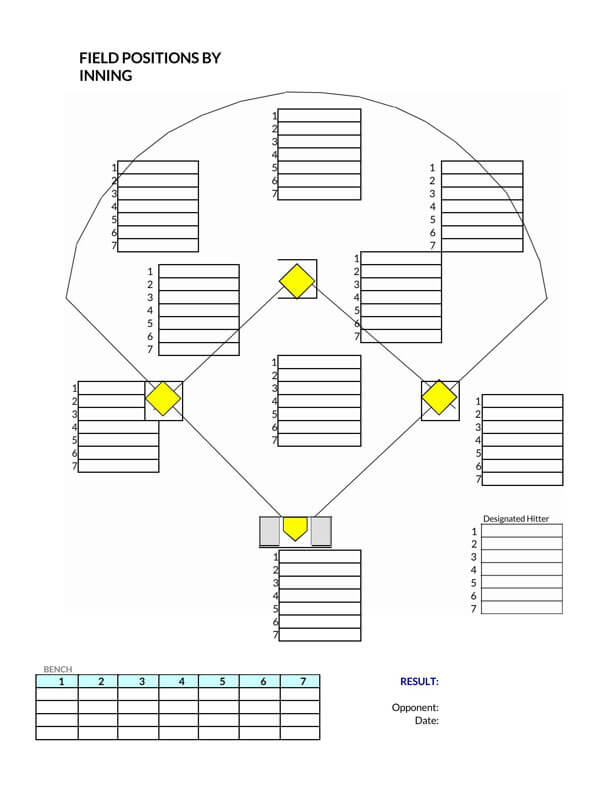
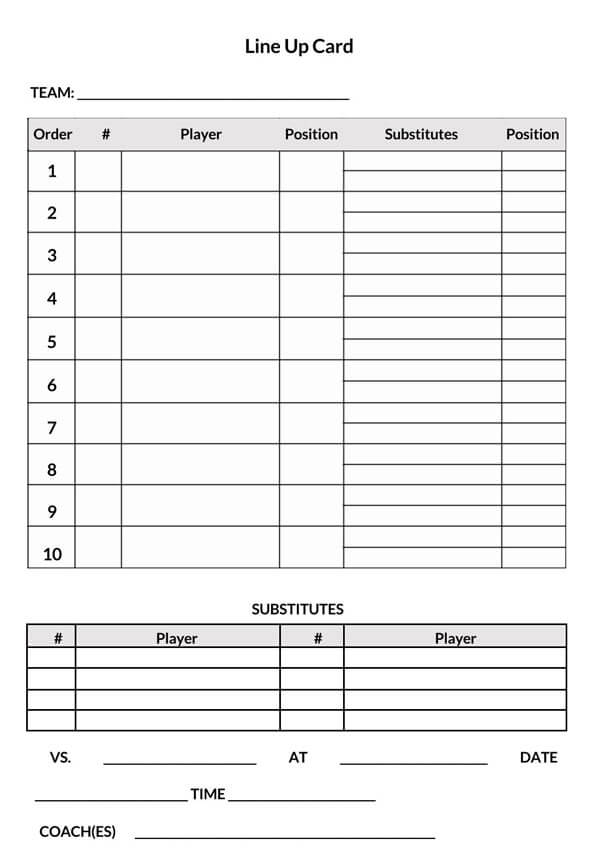
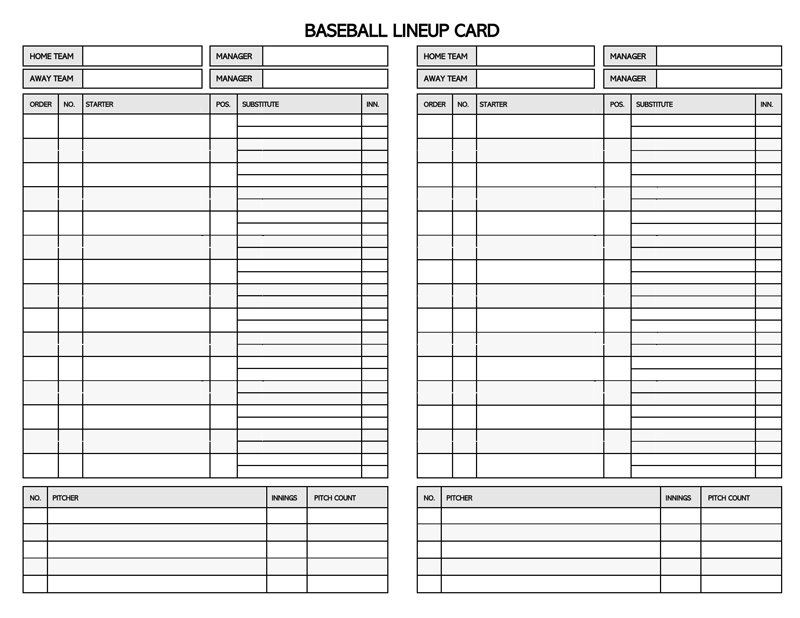
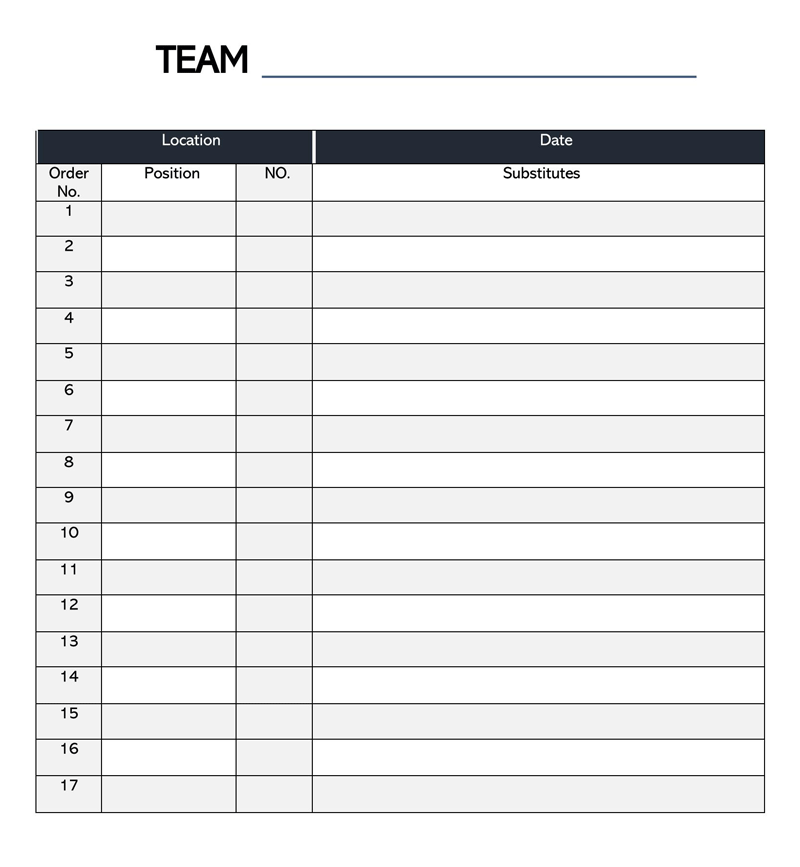
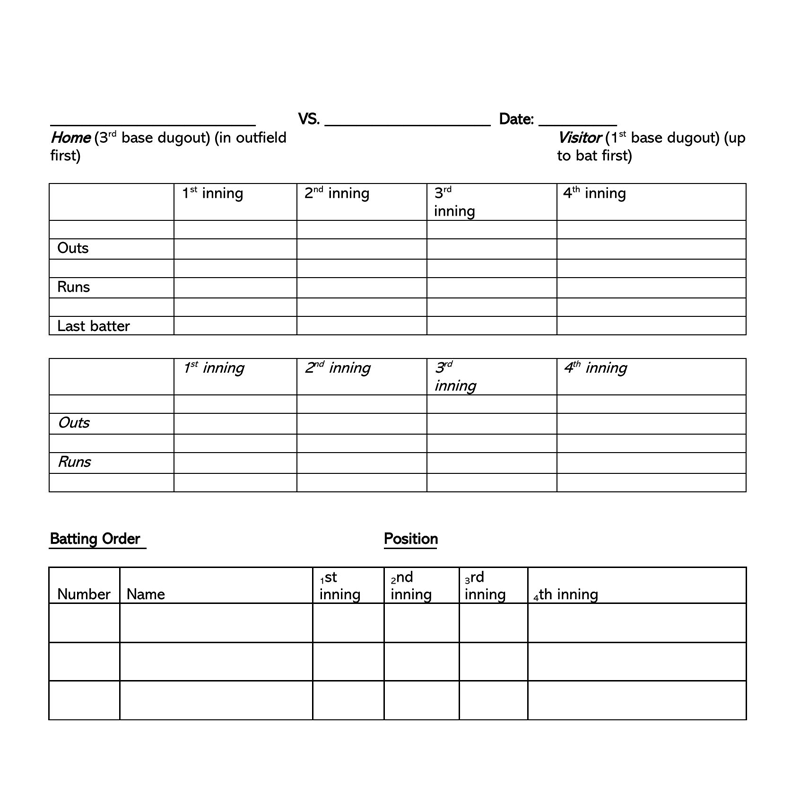
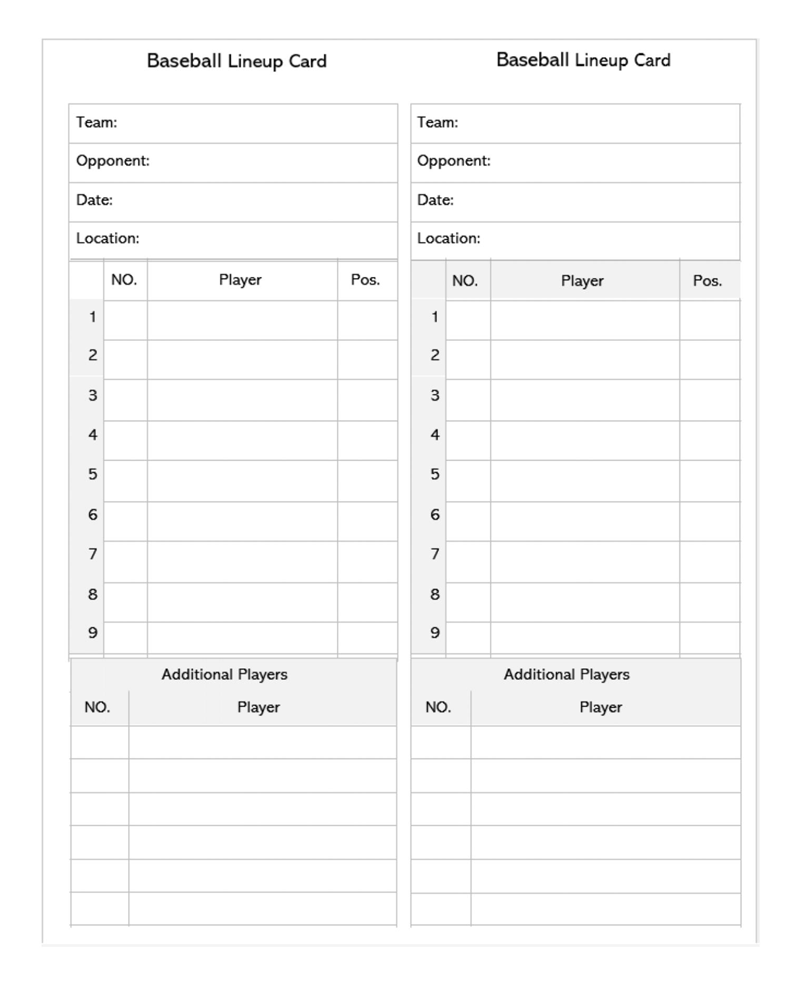
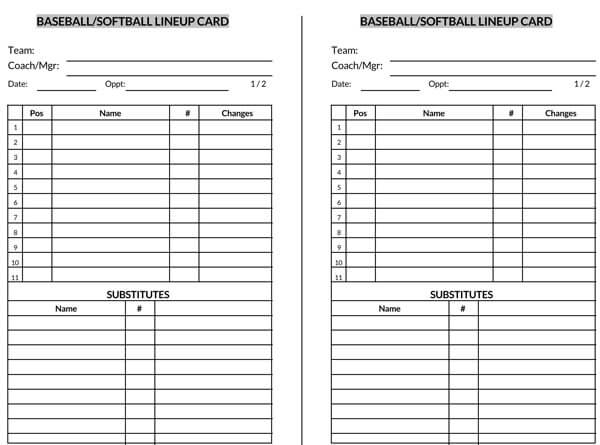
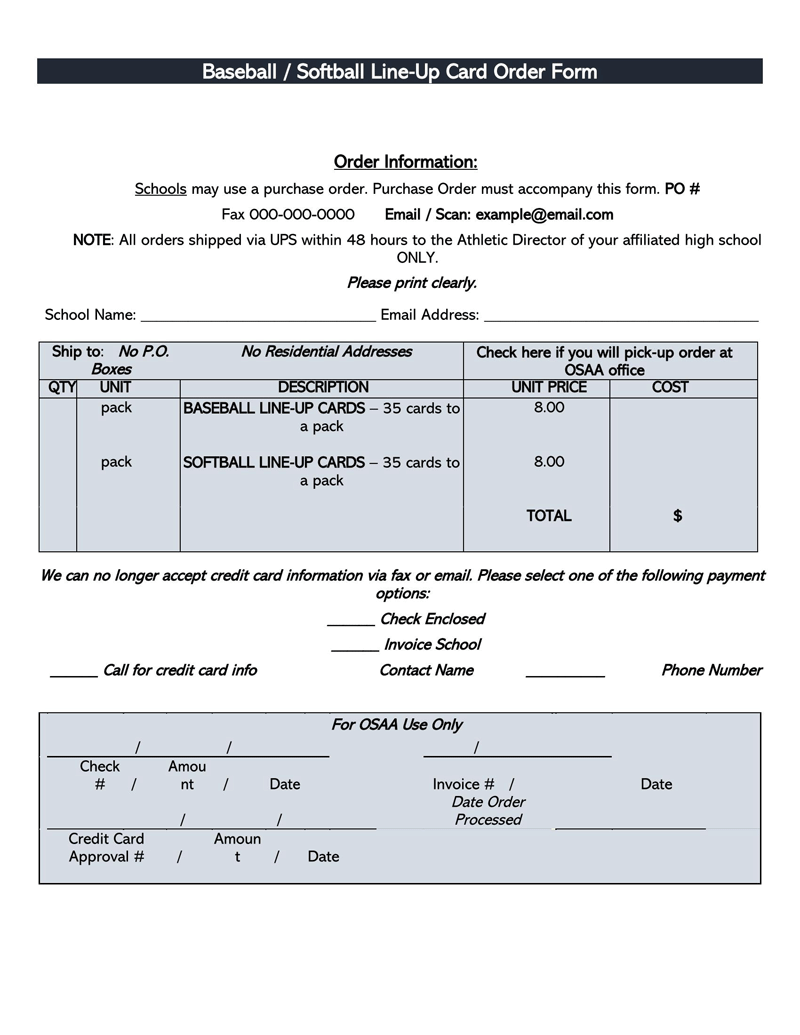
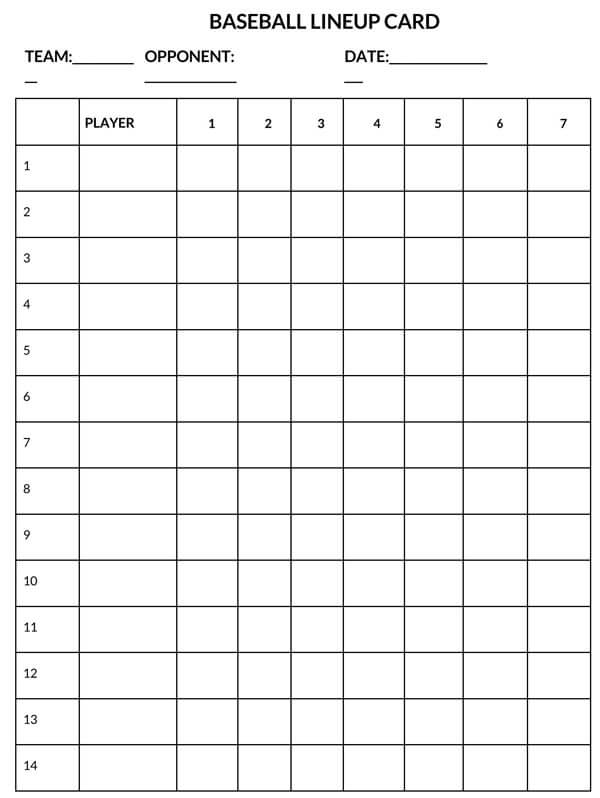
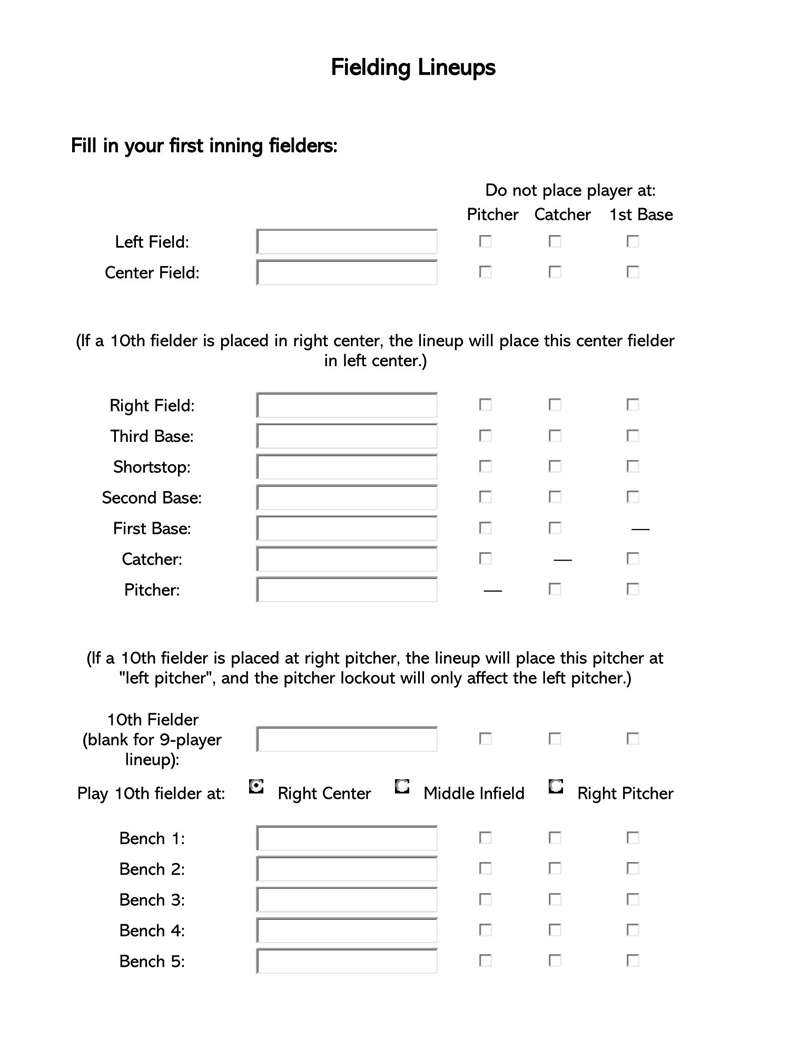
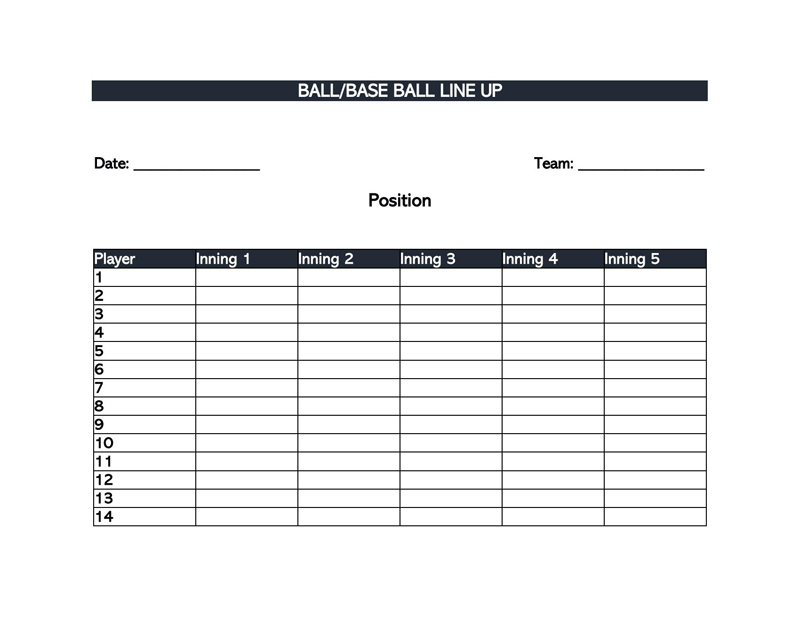
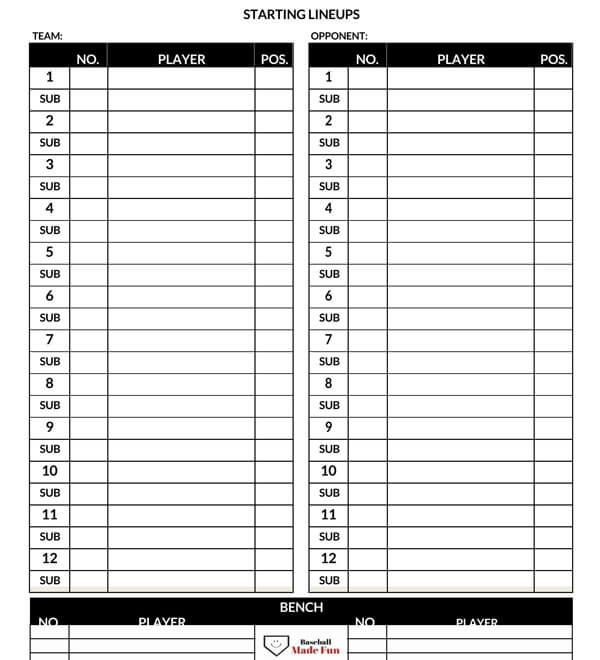

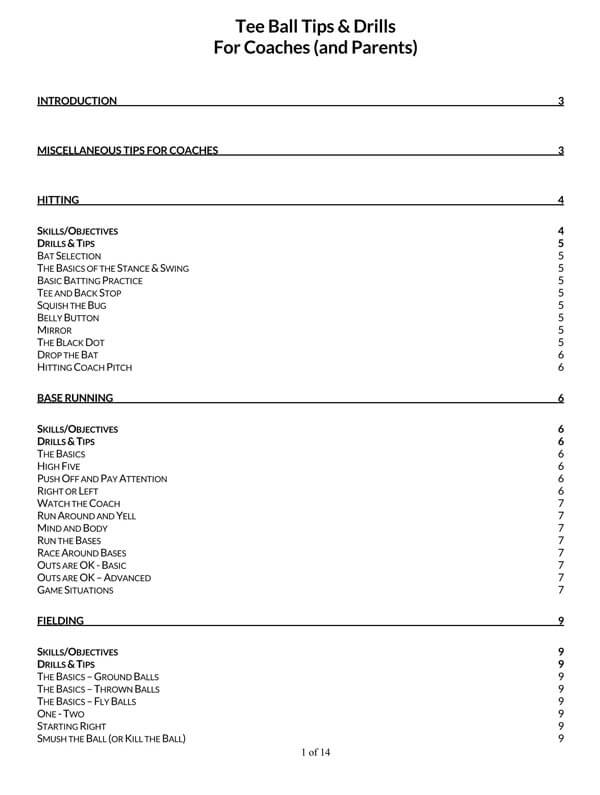
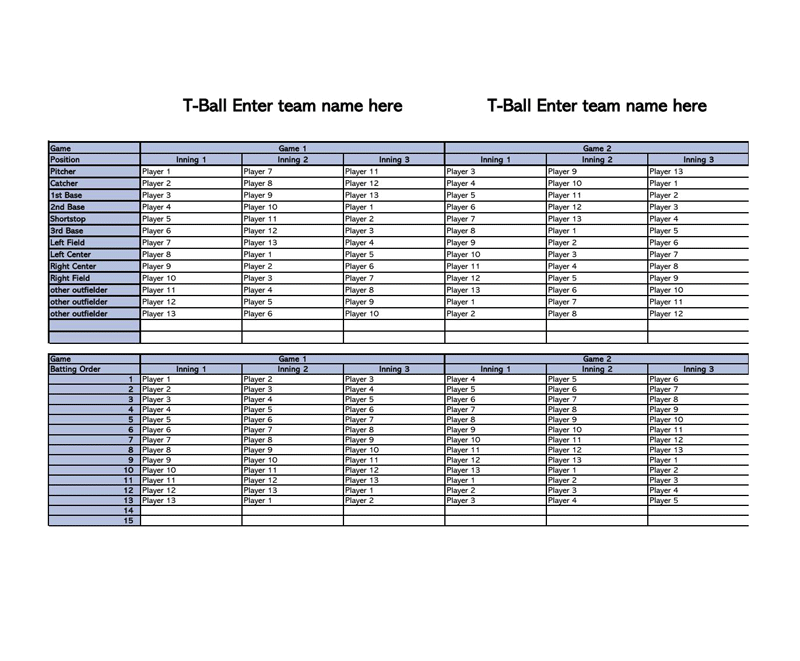
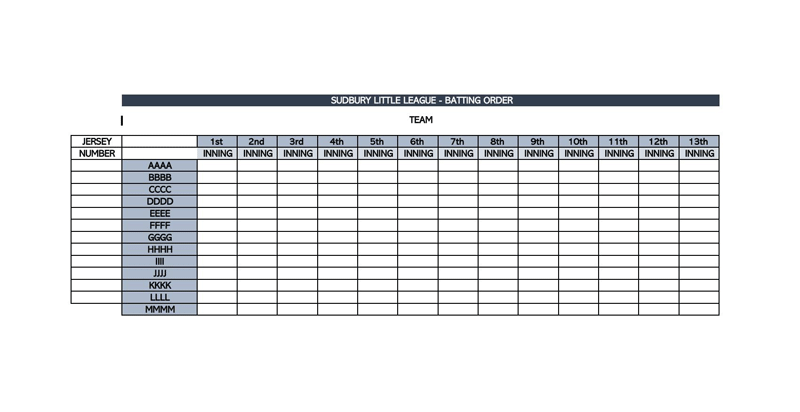
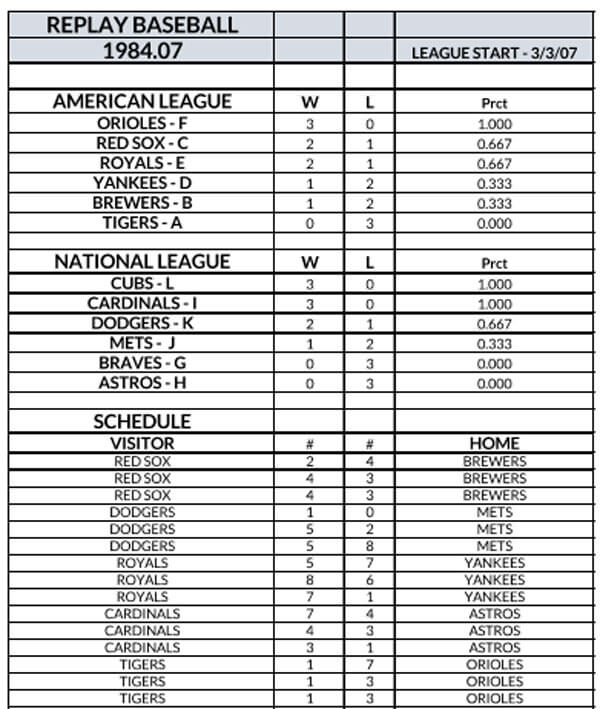
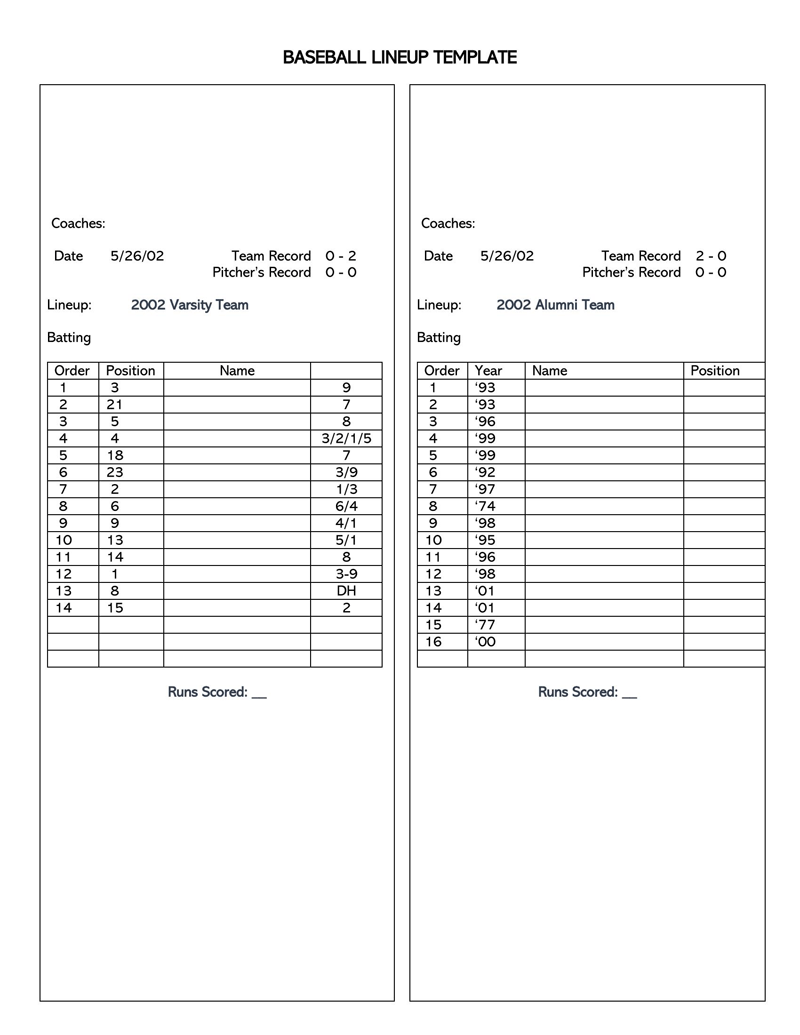
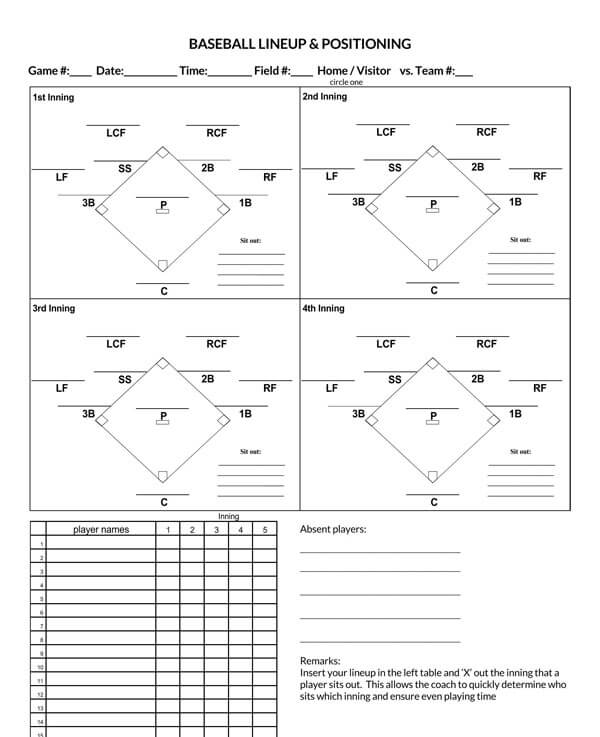
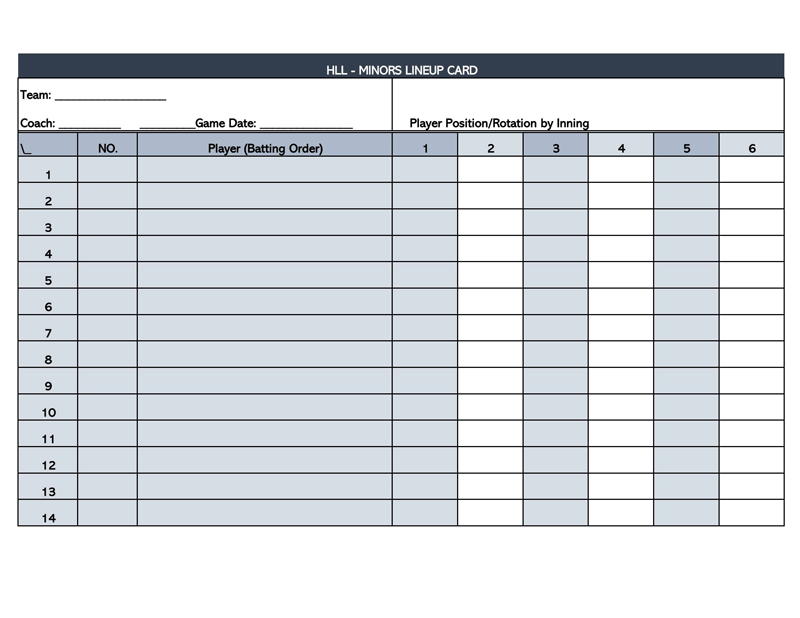
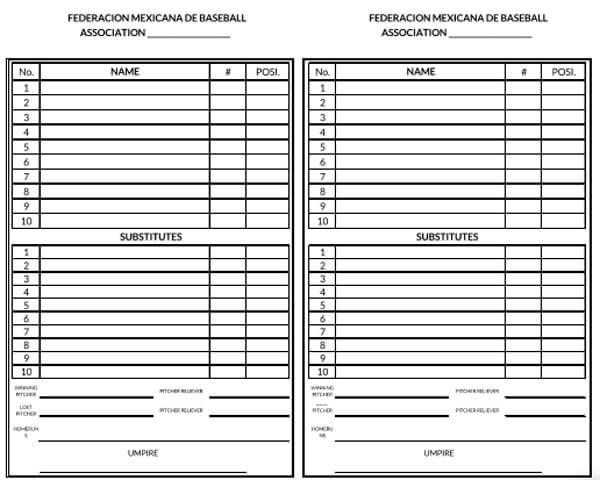
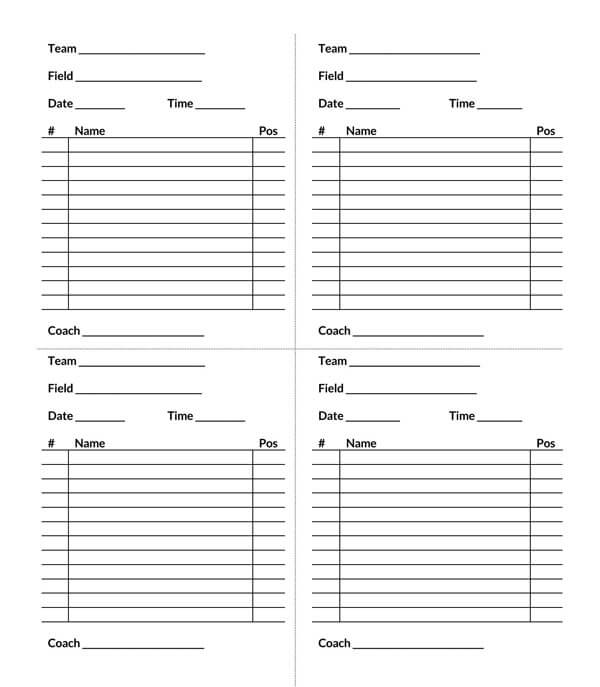
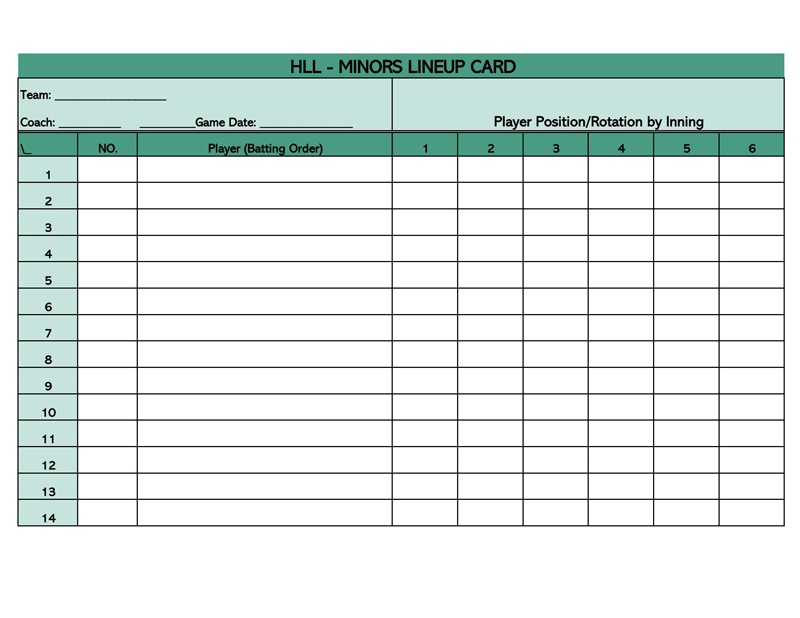
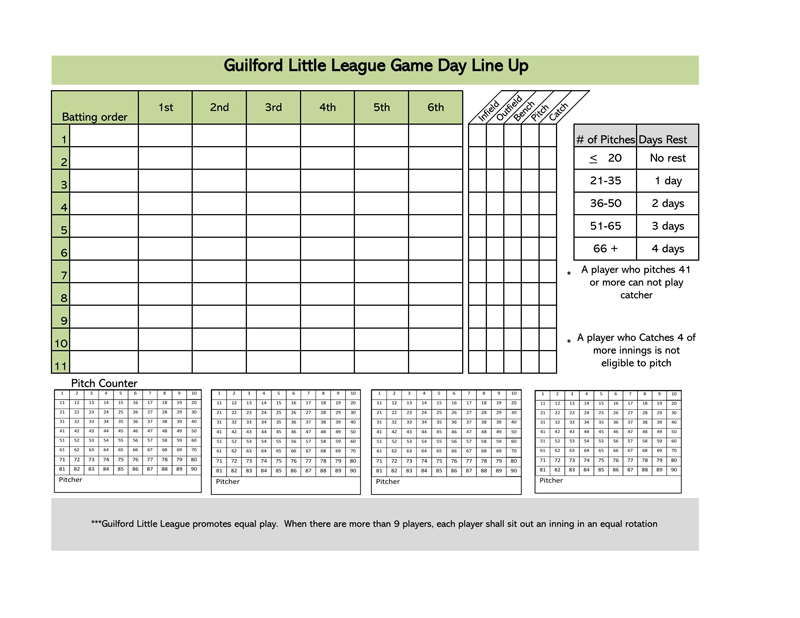


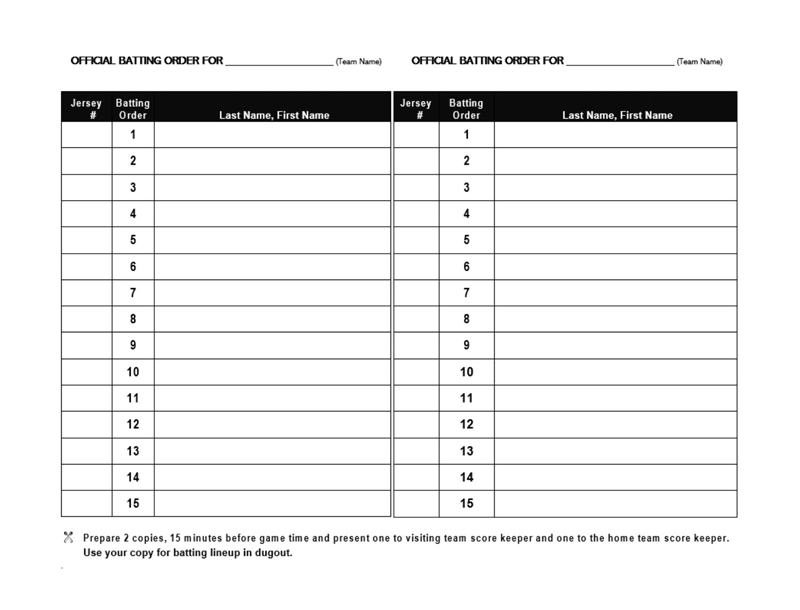

Importance of Baseball Lineup Template
Baseball lineup templates offer several benefits as they are very essential to the game and the process of organizing it.
Some of them are the following benefits to the coaches and players in a baseball team:
Organization of the game is achieved
A baseball lineup template allows the coach to identify the best role for each player based on their specialty. In addition to a baseball lineup template, a coach should also use a diagram sheet during the game. This sheet will help the coach remain organized. In addition, this sheet will help the coach ensure that all the players get a reasonably fair chance to play at every game. This is especially important for games where the players are children (such as little league games).
Means of knowing the strength of the team
Baseball lineup templates provide the coach with the means to identify the strengths and weaknesses of every player in the team and that of the team. The coach can use a baseball lineup template and a baseball position chart for each inning prepared. With these tools, the coach can save time and easily communicate with players using the chart to let each player know when it is their turn to play.
Effective tool in acing the game
A baseball lineup is a great tool for optimizing the team for the highest possible performance as it maintains order and harmony.
Record of constant updates
Baseball lineup templates record constant updates as the game unfolds. This always provides the coach with an updated record of the team information. In addition, by keeping all the baseball lineup templates on file, the coach can easily refer to them for future games, allowing the coach to observe the moves and perfect the players’ positions.
Control of the game is achieved
With a good baseball lineup template, the coach can maintain control throughout the game by controlling the lineup and position of each player for each inning. In addition, if all players are to take part in the game, a baseball lineup template will help the coach control the roles and positions each player is entrusted with.
Effective learning of younger players
Baseball lineup templates provide younger players with a visual aid that helps them learn how to play more effectively. A baseball lineup template can also provide young players with information on the movement of the defensive locations depending on the batter.
A hassle-free game is possible
Using a baseball lineup template for each game allows the coach to make informed changes or updates on their lineup. In addition, the coach can avoid hassles, delays, and other issues by printing out several templates and use these printouts to update their lineup as the need arises.
Filling a Baseball Lineup Template
Although the baseball lineup template is easy to fill, there are a few considerations that should be kept in mind while doing so in order to attain the best outcome.
Following considerations ought to be kept in mind while filling a baseball lineup template:
Know your team
When filling a baseball lineup template, the coach must have a good knowledge of the team. The Coach needs to find out who the team’s power hitters are as well as the compact hitters with low strikeout totals and low power hitters. Because also needs to identify the team’s speedsters and the team’s sacrifice specialists with valuable defensive skills.
Assemble the offense
The offense of a baseball game is important. Hence the coach needs to pick the best players for the game.
Pick consistent players
The coach needs to select consistent base-hit players for the leadoff spot. The most powerful hitter should not be placed in this spot; the second slot on a baseball lineup template should contain the second-best base hit player.
Place your power hitters
The power hitters are paced in the third spot on the baseball lineup template. The player that should occupy this part is the player who always hits home runs, triples, or doubles. Positioning this player here and their bills allows the team to collect runs early on in the game.
List down players in descending order
The remaining slots of the template should be filled by placing the names of the remaining hitters according to how skilled they are. The eight slots should contain the team’s worst battle, while the team speedster should be on the ninth lot regardless of their batting skills.
Difference B/W Baseball and Softball
Softball is a variant of baseball that was initially introduced as an indoor version of baseball. Softball has since then developed into an outdoor sport played majorly by adult females and children. Men can also play softball. Baseball bats are typically longer and heavier, with a greater diameter than softball bats. Softball bats are typically larger at about 12 inches in diameter and usually softer.
Because softball is played on a smaller field, the pitch distance is shorter than a baseball pitch. A softball pitch involves throwing the ball underarm, while a baseball pitch typically involves an overhand or sidearm pitch. There is no rule preventing a baseball pitcher from pitching underhand.
Baseball teams tend to have up to 10 available pitchers, unlike softball teams with only three pitchers.
In a game of softball, speed is the most important factor. Therefore, softball players often use bunts to win. In baseball, on the other hand, players do not use bunts as much.
Due to the time limit in softball games, they are typically shorter than baseball games that can take a minimum of 2 hours. Because softball games are much shorter, softball coaches typically need to prepare to deal with the time constraint they will face during the game.
How to Make a Baseball Lineup
Making a baseball lineup involves a good knowledge of the players’ skills, strengths, and weaknesses in the team. In addition, the coach must also know how to utilize the team to ensure optimal performance fully.
Here is a guide for coaches on making a good baseball lineup:
Starting strong
The beginning of a baseball game must be well planned.
The coach can follow the tips below to ensure that their team starts strong;
Leadoff with a fast player
The coach should look for a player who balances a strong batting power with speed. Speed, bunting, stealing bases, frequency of getting to base, frequency of ball contact, and frequency of striking out are the qualities the coach should look out for when trying to decide who takes the first spot.
Fill the #2 spot with a reliable player
The second spot should be filled by one of the top three hitters on the team. Typically, the coach only chooses between two players as the fastest hitter has already occupied the first slot. Consistent performance hit and run, sacrifice bunts, and getting on-base are required strengths in this position.
Place the last of top three in the #3 slot
The First And second hitters can be brought home or closer to home if the best all-around hitter bats right after them. The choice of the third position should be based on consistency and power. The choice should be the player who sends the balls farthest outfield. A high batting average should also be prioritized over raw power. All-round pitching, a high number of lines batted in, ability to hit home runs and doubles occasionally, and high batting average are the qualities to look for in a third hitter.
Reconsider your #2 and #3 picks
With the required strengths for the first, second, and third-hitting position on the baseball lineup template, the coach should reconsider the second and third hitters and ensure that the choices are the most efficient ones. The second hitter is likely to come to bat more often. Some coaches took time to bump the number 3 pick to the second position.
Filling out the middle with power hitters
The most powerful hitters on the team should take up the middle position.
The coach can use the tips below to maximize the team’s performance:
Pick your most powerful hitter for #4.
This position is known as the cleanup position, so the coach should choose the player most likely to clean the base of the runners. The coach should select the player that is most likely to hit home runs or send the ball furthest into the outfield. This forces the opponents’ defense to spend time chasing after the ball and passing it back in-field. This way, the first, second, and third hitters have enough time to reach home.
Fill the fifth spot with your second-best clean-up.
The choice for the 4th position may have a less-than-perfect batting average. Hence if the first hitter strikes out, the fifth hitter should be the next best power hitter. This will allow the first three players another chance to make it to home plate. If the number 4 hitter was successful at-bat, give the first three hitters a chance to reach the next base.
Reconsider your picks for #3, #4, and #5
The traditional method of making a lineup is to use the best hitters for the first three spots, and then the remaining slots should be filled with the following best and so on. However, the coach should consider that the third hitter is likely to bat more often in one game than the 4th and 5th. Hence the traditional logic is that the third position should be filled with the most potent hitter with the highest batting average.
Also, the fourth and fifth hitters are more likely to have fewer opportunities to Bat in one game with more than one base loaded; hence some coaches prefer to reserve the more consistent hitters for the 4th or 5th hole.
Rounding out the lineup
The final part of the lineup is just as important as the beginning.
Following suggestions ought to be considered while finalizing the lineup:
Evaluate your remaining players
The remaining players may be a solid team close to the other players in terms of abilities, or the difference in batting skills varies significantly from player to player. Whatever the case, the coach should review each player’s strengths and weaknesses as a hitter and why these concerns the likely most needed ability from a given spot at the bottom of the lineup. The players’ respective talents usually determine the sixth to the ninth position. They are usually arranged in descending order, with the worst player of the team going last.
Choose your next best hitters for #6 and #7
The rest of the players are expected to be more proficient at only hitting singles unless the team is an all-star team of hitters. If both the first and second hit is struck out, the following two slots should be filled according to who has the best record of hitting the ball. The coach can improve the team’s odds by bringing base runners home while still at-bat. If there is little difference in performance between the 6th and 7th best players, positioning these players should be based on which player is better at stealing bases. The sixth spot should be filled with a strong base stealer, which increases the chance of the team driving this baserunner close to home even if the 7th, 8th, and 9th hitters can only hit singles.
Decide who should be #8 and #9
The 8th and 9th positions should be filled with the team’s worst hitters. The coach should figure out where they want to place the absolute worst. The difference in talent across the middle of the lineup should be considered when making this decision. The coach should anticipate what situations the team will face as a batting rotation nears its bottom. If the team is a strong team that can reach the bottom of the lineup with only one out, the coach may stick to the traditional method of placing the worst hitter last. If the 6th player strikes out, the next hitter will be followed by one of the best players on the team. If the coach expects to have two or more outs before the ninth player B, the 8th and 9th hitter should be considered the same effect as the first and second. Since these two players may start the rotation next inning, the coach should pick who goes first according to the same criteria for the first and second hitter.
Consider altering based on opposition
It is an excellent strategy to research the other team’s pitchers. The coach may review any past games that the team played against the other team. The coach may consider switching the batter into different spots in the lineup if it is likely that this gives an advantage.
For example:
If the team has a relatively even number of left-handed and right-batters, the coach can alternate between the two to constantly pose a challenge to the opponent.
Additional Tips for Defending Team
Defending your team is as significant as giving a competitive fight in the game.
Some of the tips to do so effectively are as follows:
Start with a catcher
The catcher is a good player at listening and specific energetic, aggressive, and has strong leadership skills. The catcher should get along well with the pitcher and must be an excellent team player.
Find the bases
A good lineup of players on all of the bases improves the team’s defense. The first baseman must have enough skills to catch a ball struck by any of the players on the field. The infielder is the second baseman with a weaker catch. The third baseman should be the player with the fastest reaction.
Fill in the right and left-field players
The right and left-field players must possess strong arms great at catching with the right outfielder, maybe one of the weakest players on the team.
Assign the center field player
The center field is one of the most important positions. The player signed to this position must be on the same level as the left outfielder or the third baseman. Confidence is one of the key characteristics to look for when assigning this position to a player.
Conclusion
Baseball lineup templates are essential for planning effective plays for the entire team. This is why we have provided detailed and well-researched baseball lineup templates to help coaches derive the highest performance from their team. Download our baseball lineup templates right away to get your team performing optimally.




